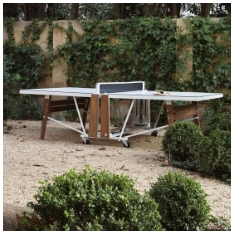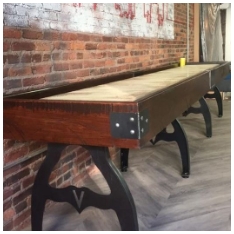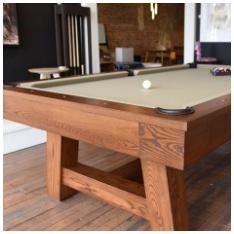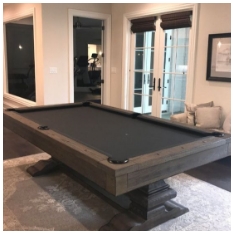Creating a functional and comfortable game room involves more than just adding a pool table. The materials and accessories used play a key role in both performance and longevity. One often overlooked component is the felt on the pool table. Choosing high-quality pool table felt significantly improves how the game is played and how long the table lasts. This guide explores the importance of pool table felt, what to consider when choosing it, and how it enhances your game room.
Why Pool Table Felt Matters
The felt on a pool table directly impacts the speed, accuracy, and overall quality of the game. It also serves a protective role for the table’s surface. A worn or low-grade felt can cause inconsistent ball roll and reduce enjoyment. On the other hand, quality felt supports smoother gameplay and retains its condition over time.
Consistency in Gameplay
Pool requires a consistent playing surface for accurate shots and control. High-grade felt offers even texture and proper tension across the table. This ensures reliable ball response, whether you’re aiming for a bank shot or executing a break.
Enhanced Durability
Game rooms often see frequent use. A durable felt resists wear and tear from repeated play, chalk dust, and cue contact. Low-quality felt tends to develop tracks, fuzz, or holes more quickly. Investing in quality materials extends the lifespan of the table and reduces the need for frequent replacements.
Better Appearance
Visual appeal matters in any entertainment space. Premium pool table felt retains its color and structure longer than cheaper versions. It resists fading, pilling, and surface distortion, keeping your game room looking well-maintained.
Choosing the Right Pool Table Felt
Before installing or replacing pool table felt, understanding the different types and characteristics helps in making the right choice for your needs.
Woolen Felt vs. Worsted Felt
Pool table felts are generally made from wool, but the manufacturing process distinguishes them.
Woolen Felt
This is thicker and has a fuzzier texture. It’s commonly found on casual or recreational tables. The nap in woolen felt can slow ball speed and affect precision, but it is more forgiving for casual players.
Worsted Felt
This type is made by combing the wool fibers in one direction, creating a smoother, faster surface. It is the preferred choice for tournament or serious players because it provides better ball control and fewer disruptions in play.
Weight and Blend
Pool table felt is often categorized by weight (measured in ounces per yard) and fabric blend. A heavier felt offers more durability, while a balanced wool-to-nylon ratio improves performance. Common options include:
- 20-22 oz: Lightweight, used for less demanding play
- 24-26 oz: Standard weight for most residential and commercial tables
- 75/25 wool to nylon blend: Offers good durability and smoothness
Color and Customization
Color doesn’t just serve an aesthetic purpose. It affects visibility, especially in rooms with varying lighting. Traditional green is common, but shades like tournament blue or burgundy are also popular. Choose a color that reduces eye strain and complements the room’s design.
Installation Considerations
Proper installation is essential to ensure that quality felt performs well over time. Even the best material can underperform if it is not stretched and fitted correctly.
Surface Preparation
Before applying new felt, the slate must be clean and level. Dust, chalk, or adhesive residue from previous installations should be removed to create a smooth surface.
Tension and Stretch
The felt should be stretched evenly across all sections of the slate. Uneven tension results in wrinkles or air pockets, which interfere with play. Professional installers use specific techniques to staple and glue the felt securely while maintaining uniform tension.
Rail and Cushion Recovery
Many forget to re-felt the rails and cushions, but this is important for consistent bounce and rebound. Matching rail felt to the table surface ensures continuity in look and feel.
Maintenance of Pool Table Felt
Routine maintenance helps preserve the integrity of the felt and extends its useful life. Keeping the surface clean and free from contaminants is key.
Brushing and Vacuuming
Use a soft-bristled pool table brush to remove chalk and debris after each session. Brushing should follow the direction of the nap (if present) to avoid damage. Periodically, a low-suction vacuum can help lift embedded dust without pulling the fabric.
Covering the Table
A cover protects the felt from dust, sunlight, spills, and pet damage. Covering the table when not in use minimizes unnecessary wear.
Managing Humidity and Temperature
Game rooms should maintain stable indoor humidity. High moisture levels can cause felt to stretch, sag, or form mildew. Climate control also preserves the wood and slate components of the table.
Benefits of Upgrading with Quality Pool Table Felt
Whether you play casually or frequently host games, upgrading to premium felt brings multiple benefits to your game room setup.
Improved Play Experience
Consistent ball behavior allows for better strategy and shot execution. The reduced friction on high-quality felt supports faster gameplay, which many players find more engaging.
Long-Term Value
Though the upfront cost may be higher, durable felt reduces the frequency of re-felting. This makes it a cost-effective investment over time.
Professional Look and Feel
A well-maintained table with premium felt elevates the look of your game room. It creates a refined playing environment and makes a better impression on guests.
When to Replace Pool Table Felt
Even the best felt has a lifespan. Recognizing when it’s time for replacement prevents further damage to the table and improves play.
Signs of Wear
Look for the following indicators:
- Visible ball tracks or worn spots
- Loose or wrinkled areas
- Fading or discoloration
- Pilling or fuzz build-up
If these issues appear, especially after several years of regular use, it’s time to consider replacement.
Frequency Based on Use
For occasional recreational play, felt may last 5–7 years. Heavier use—such as in a home with frequent play or a commercial setting—may require replacement every 2–3 years. Maintenance practices also influence longevity.
Conclusion
Choosing to upgrade your game room with quality pool table felt is not just about looks—it’s about function, durability, and the overall enjoyment of the game. From improved play to long-term cost savings, high-grade felt offers practical benefits for any pool enthusiast. Take the time to evaluate your current setup and consider the impact that the right felt can have. Whether you're replacing worn material or outfitting a new table, the choice of felt plays a critical role in the performance and aesthetics of your game room.





